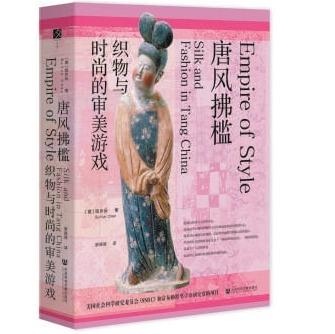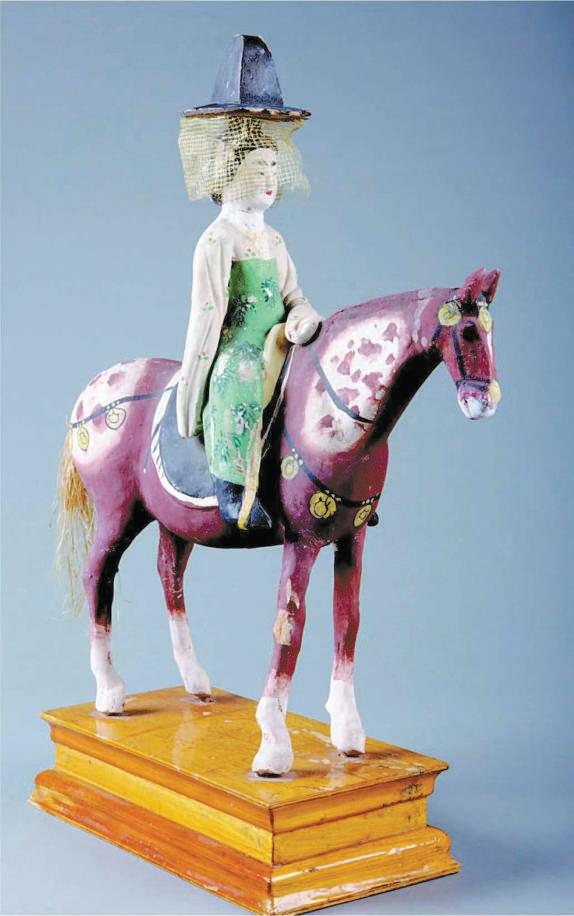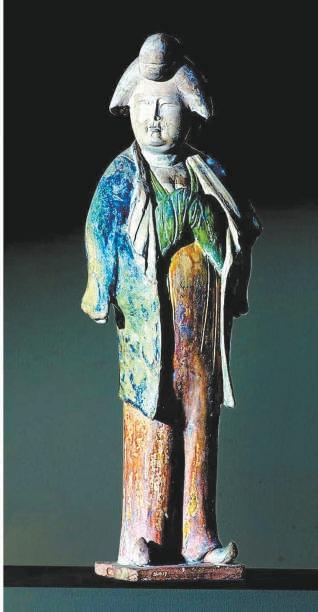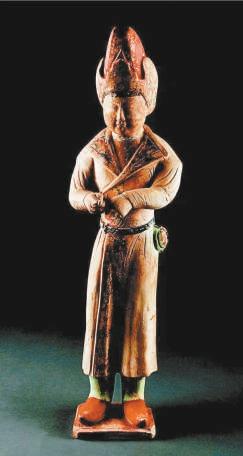Beijing Evening News Wuse Tu | Author He Shu
The annual International Women’s Day has just passed, and "women hold up half the sky". The creation, development and myriad weather of this world are absolutely inseparable from the hard work of hundreds of millions of women throughout the ages. Similarly, the "fashion" that affects human life cannot be separated from the promotion and struggle of women.
When it comes to fashion, the first reaction of public cognition will think that this is a cultural phenomenon after the industrial revolution gave birth to the consumer society. However, in a broad sense, the fashion trend in the pre-modern society is also colorful. For example, the Tang Dynasty, which has an important position in the history of China and the history of world civilization, has an unprecedented pursuit of fashion. The book "tang style Brushing the Threshold" recently published by Social Science Literature Publishing House and written by Chinese scholar Chen Buyun focuses on the 300 years of fashion in the Tang Dynasty.

Chen Buyun Social Science Literature Publishing House, tang style.
The ban on luxury can’t ban the love of beauty.
"Fashion is the center of people’s life in the Tang Dynasty, because this dynasty placed fabrics at the center of the economic and moral value structure. Elite men and women subvert the dress code to obtain gorgeous silk and fashionable designs. The changes in economic and social structure have triggered a new sense of time, a The Imitation Game, and a change in production methods, which are the pioneers of the formation of modern fashion systems. " A passage on the cover of tang style’s Whistling Threshold succinctly summarizes the main idea of this book, that is, to find the origin of fashion outside the mainstream western discourse system and to dig out the inextricably linked relationship with today. As Valerie Steele, director of the Museum of new york Fashion Institute, commented: "Is fashion a Western phenomenon related to the rise of European capitalism? This has been the argument for many years. In Chen Buyun’s works, it shows the existence of a prosperous fashion culture in the Tang Dynasty in China. "
The title of the translated version of the book abandoned the original Imperial Style, and the title of "tang style blows the sill" was taken from the great poet Li Bai’s "Qingpingdiao I", with three poems, which praised Yang Guifei’s beauty at the order of Tang Minghuang. "Clouds want clothes and flowers, and the spring breeze blows the sill, and it is full of exuberance. If it weren’t for the head of Yushan Mountain, it would meet Yaotai under the moon. " Although there are many high songs of "Who are we from Artemisia?", there are also many works of "destroying the eyebrows and bending the waist" in the early years. Although it is a propositional composition, this poem is also magnificent in imagination, and it has done a great job of Yang Guifei’s national beauty.

Female figurines riding horses with veils.
The Book of the Old Tang Dynasty describes Yang Guifei’s "gorgeous posture". Wu Hong, an art historian, also insisted: "It is said that the fashion of shaping fat women is largely due to Yang Guifei’s well-known fullness. Although this statement is doubtful, because such a character image appeared in the early 8th century, even before that, Yang Guifei did embody the essence of this image and marked its climax. Because she not only dominated the upper class in Chang’ an, but also dominated the fantasy of contemporary men. " The richness wrapped under the precious and gorgeous silk became the weather vane of that era. At first glance, this is a lively romantic story, but there is a complicated change process behind it.
Cloth represented by silk is not only the main carrier of the tax system, but also the substitute of money in some specific years because of the encouragement of the government, which can be circulated in the market. The clothes processed by them show the power level and social status.
Mr. Shen Congwen once concluded in the study of ancient Chinese costumes: "feudal rulers have always regarded clothing as a symbol of class, that is, the rulers are also hierarchical and should not be confused." Therefore, every time the dynasty changes, it will be rescheduled as usual. "
As soon as the Tang Dynasty was founded, the society was divided into three social classes, namely, the privileged class dominated by royal relatives and officials, the free civilians and hereditary servant families, the private servants and the untouchables composed of slaves, and the clothing of different classes had tireless detailed regulations-the emperor had 14 sets of clothes for different occasions, 6 sets of princes and 3 sets of empresses, and the royal family and officials and their families were divided into nine categories. At the same time, "women are allowed to wear low-grade clothes, but they are strictly forbidden to wear clothes higher than their own grades." This restriction helps to consolidate the connection between privilege and status and ensure the status of high-grade people. Like color and chroma, silk fabrics are also strictly regulated. Those more complicated and luxurious patterns and weaves can only be used by the highest-ranking women in the imperial court. " Since then, throughout the Tang Dynasty, emperors of all dynasties have made further detailed provisions on this.

Tri-colored women pottery figurines in clothes
The rules formulated by the royal family are also violated by members of the royal family first, and the starting point is the pursuit of fashion. This is the case with Princess Anle’s hundred birds skirt. According to the Book of the New Tang Dynasty, this gorgeous dress is "one color in the face, one color in the side, one color in Japan and China, and one color in the shadow, and all kinds of birds can be seen", which has led to a strong follow-up. "The self-made wool skirt is more effective for the rich, and the feathers of exotic birds and animals in the rivers and mountains are exhausted." Note that a major feature of fashion is imitation. Through imitation, we can gain a sense of psychological identity beyond identity and social status. In the later generations, although there are more complete means of prohibition and punishment, if the dress does not conform to the grade, it will be punished by forty slaps.
In 714, after Xuanzong succeeded to the throne, there were three orders to ban luxury, namely, Forbidden Jade and Splendid Jade, Forbidden Jade and Splendid Jade, and forbidden luxury in 726. Each ban was severely worded, not only the gold and silver ornaments on the clothes were melted and cast to supplement the military expenditure, but also the jade and pearls were required to be burned, which was explicitly stated. In hindsight, this is more like a performance art for the world. Li Shu, a royal woman who died in 736, also revealed the invalidity of the luxury ban to later generations.
Following Chen Buyun’s brush strokes, we can see that "the funerary objects in Li Shu’s tomb contain various forms of gold ornaments, such as woven gold silk clothes, gold-framed flower buds, gold-plated bronze hair clips, and some gold threads. Pearls, turquoise, mother-of-pearl, precious stones and amethyst are also fixed and embedded in the golden crowns. The belt part is made of pearls, and the gold frame is decorated with flowers. " Li Shu is neither a princess nor a husband, but he is just a small official with seven products. These are obviously over-the-top funerary objects. Reminiscent of the extravagance of Yang Guifei’s family "with a mass of golden peacocks and silver unicorns … are blue leaves of delicate kingfisher feathers", the so-called luxury ban is more formal.
From Daizong to Dezong to Wenzong, there were various bans. During the years of Wenzong, except for the production of luxury silk, it was even stipulated that "new samples" were not allowed. In order to implement the regulations, he also ordered Wang Ya, the minister, to revise the clothing system and re-implement the regulations on determining the color and type of clothing by grade. "this Jiujiang official. My blue sleeve was wet" said that Sima Bai Juyi with eight products was wearing blue clothes. However, Princess Yan ‘an, the sister of Wenzong, wore a large and luxurious silk dress when she enjoyed the lantern at midnight snack in 839, which annoyed Emperor Wenzong and made this rule fail again.
The game of ideas
In addition to decrees, there are also prevailing social concepts that hinder fashion.
The opening up of the Tang Dynasty surpassed previous dynasties, and the management of the western regions not only exported silk, porcelain and culture, but also imported all kinds of articles and habits. The most obvious thing is the prevalence of Hu clothes, and the Tang people’s fascination with Hu clothes is related to horse riding outings, polo competitions and the popularity of music, dance and articles in the western regions, which are all indulged by the court. Hu Fu was popular for centuries, and it reached its peak in Xuanzong’s reign. "All the riders from the imperial palace are wearing Hu Mao, and they show up with beautiful makeup, and there is no complex barrier. The scholar’s house has followed suit. "

Painted Hu fu female figurines
The popularity of Hu fu has not only shaken the prohibition of luxury, but also blurred the gender differences and disrupted the social class, so that the editors of Old Tang Shu bitterly denounced, "Too often, people are happy to admire Hu qu, nobles are eager to eat Hu, and scholars and women are all dressed in Hu fu, so there is Fan Yang’s rebellion against Hu, which bodes well for the future." In their view, this disordered fashion was the chief culprit that caused the Anshi Rebellion to almost destroy the dynasty’s rule, and put the pursuit of fashion by human nature under the moral stick, adding a painful whip. Absolute beauty’s prosperous Tang Dynasty finally declined, and later generations can only get a glimpse from poetry and archaeology. Fortunately, time will wash away everything. Today, when we appreciate and admire the splendor and exquisiteness of ancient fashion through historical remains, how many people can think of those ridiculous bans?
Although the fashion in the Tang Dynasty changed a lot, the working people at the bottom did not enjoy it at all. Heavy taxes and heavy labor overdrawn their energy and enthusiasm, and strict decrees made them have to wear natural linen. Only in the new era when people fully enjoy material wealth can people enjoy the beauty brought by fashion, even in the wholesale market, they can find a dress of the latest style and participate in "fashion" in a cheap and good way. (Editor: Li Zhengrong)